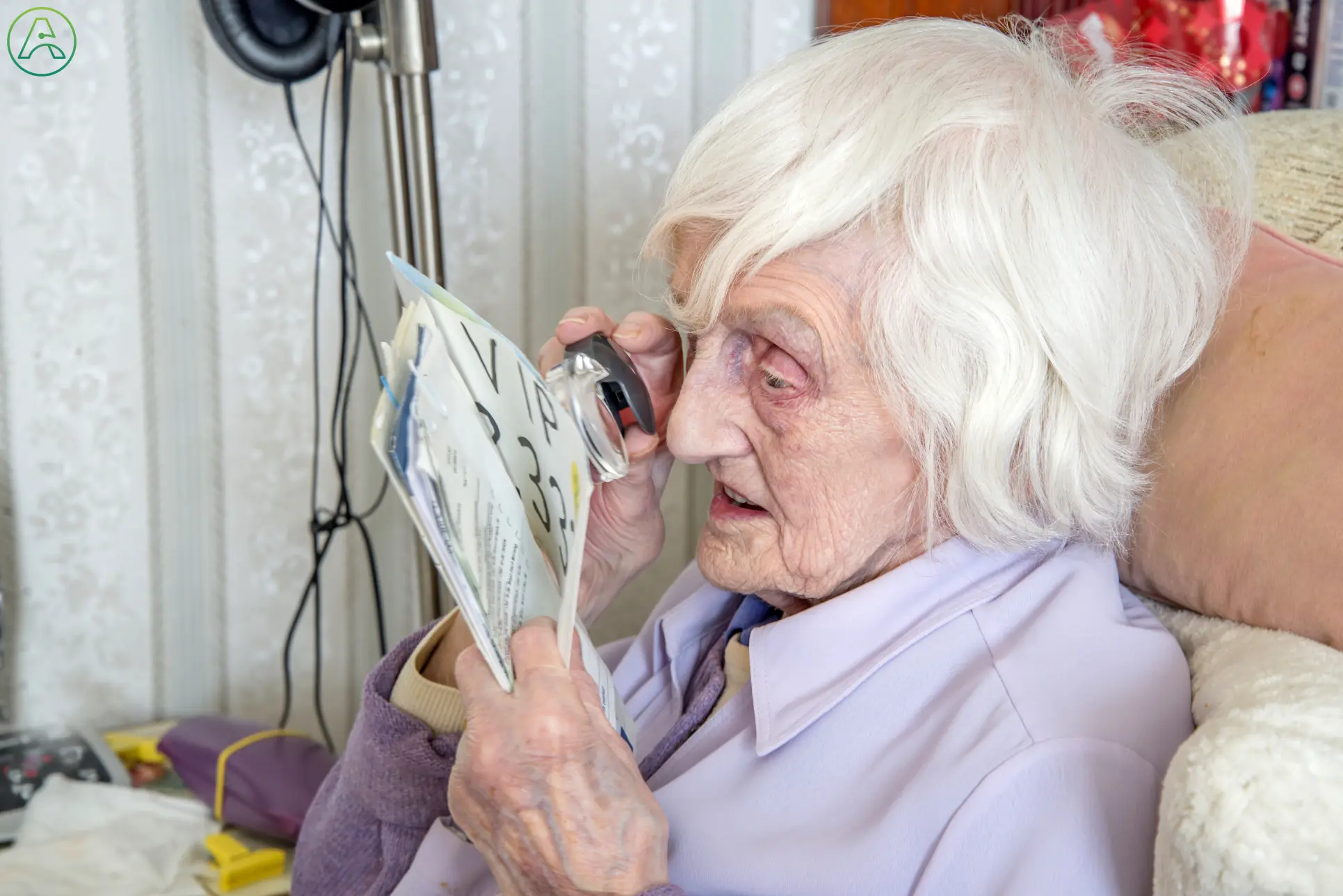After reading Seven Quick Facts About Deafblindness, you may have questions about the signs and symptoms associated with the diagnosis. In this article, Ability Central will address the following:
How is congenital deafblindness diagnosed?
What are the early signs of acquired deafblindness?
What are the early signs that vision impairment may warrant a deafblind diagnosis?
What are the early signs that hearing impairment may warrant a deafblind diagnosis?
What diseases may lead to deafblindness?
Where can a person go for a deafblind diagnosis?
Where can I get more information about deafblindness?
How is congenital deafblindness diagnosed?
Deafblindness occurs in three out of 100,000 births. The initial signs of congenital deafblindness are behavioral differences. For example, the infant or child may not:
turn their heads to hear where a sound is coming from
make much eye contact
react to loud noises
meet developmental milestones
Parents should communicate concerns with the doctor’s pediatrician.
What are the warning signs of acquired deafblindness?
Acquired deafblindness means the person was not born deafblind. Any of the following may apply:
The person was born with neither hearing nor vision impairment but developed both.
The person was born with vision impairment and later developed hearing impairment.
The person was born with hearing impairment and later developed vision impairment.
The loss of senses may occur quickly or slowly progress over time.
The New England Consortium on Deafblindness (NEC) defines deafblindness as “combined vision and hearing loss, which may challenge a person’s ability to communicate, interact with others, access information, and move about safely.”
In the following two sections, we will identify the vision impairment and hearing impairment warning signs.
What are the early signs that vision impairment may warrant a deafblind diagnosis?
If a person already has a vision impairment that warrants the diagnosis of being deaf, then the development of vision impairment may warrant the diagnosis of being deafblind.
Signs of vision impairment may include:
Difficulty in seeing in low or bright light
Not recognizing people they know
Relying on touch to find and identify items
Holding reading material close to their face
Sitting closer to the TV
Bumping into things
What are the early signs that hearing impairment may warrant a deafblind diagnosis?
If a person already has a vision impairment that warrants the diagnosis of being blind, then the development of hearing impairment may warrant the diagnosis of deafblind.
Signs of hearing impairment include:
Not hearing you if you speak to them from behind
Increasing the volume on the television or radio
Difficulty following a conversation
Difficulty with multiple voices in the same room
Not hearing sounds they used to be able to hear
Asking others to speak louder, slower, and more clearly
What diseases may lead to deafblindness?
Although most cases of acquired deafblindness occur when a person is born either deaf or blind and then develops the other condition, some diseases can result in deafblindness. These include:
CHARGE syndrome is a disorder that affects areas of the body that are used to spell out the word (coloboma, heart defects, atresia choanae, growth retardation, genital abnormalities, and ear abnormalities).
Usher syndrome is characterized by partial or total hearing and vision loss that worsens over time.
Down syndrome is a chromosomal condition associated with an intellectual or developmental disability, a characteristic facial appearance, and weak muscle tone in infancy.
Stickler syndrome is a group of hereditary conditions characterized by a distinctive facial appearance, eye abnormalities, hearing loss, and joint problems.
Dandy-Walker is a developmental brain condition in which the part of the brain responsible for the coordination of movement is malformed.
Goldenhar syndrome mainly affects the development of the eye, ear, and spine. It is present at birth.
Zellweger spectrum disorder is when the peroxisomes in your cells aren’t working correctly, are absent, or are severely decreased.
Cornelia de Lange syndrome is a developmental disorder affecting many body parts.
Congenital Rubella Syndrome (CRS) was once the leading cause of deafblindness around the world. The availability of the MMR vaccine has resulted in a dramatic decrease in the number of children being born with CRS.
Where can a person go for a deafblind diagnosis?
Congenital deafblindness is generally discovered during prenatal testing. Most cases of deafblindness present at birth cannot be treated.
Acquired deafblindness can only be diagnosed through qualified doctors. Visit your doctor to understand treatment options if you notice worsening vision and hearing impairment.
Where can I get more information about deafblindness?
Ability Central has an entire library of articles to help you learn about deafblindness, including:



